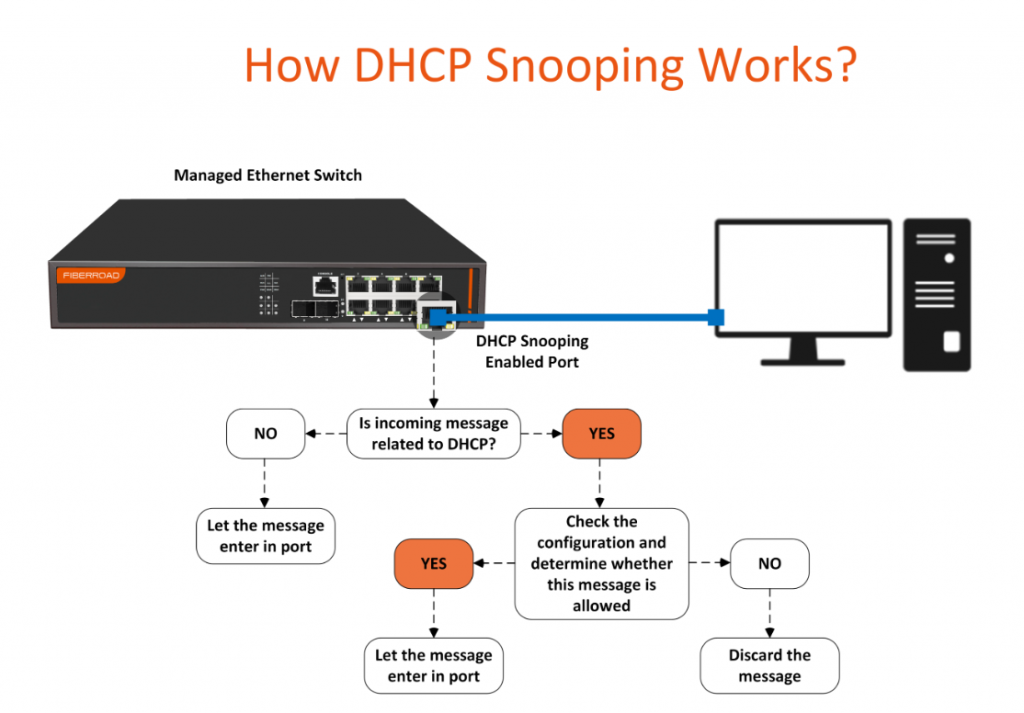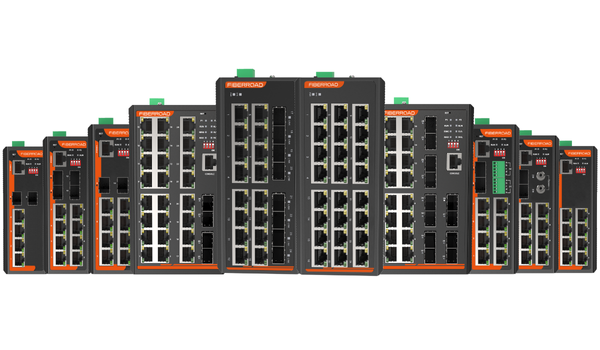DHCP snooping is a security feature for networks that are connected to the Internet. By definition, DHCP Snooping is a security mechanism which prevents malicious users from attacking your network by intercepting or altering messages between network clients and DHCP servers. It provides an extra layer of protection from malicious activity on your network and helps protect against potential security risks. In this blog post, we’ll explore what DHCP snooping is and why it’s important to use it in today’s digital world. We will discuss how DHCP snooping can protect your network from potential threats, including how to set it up and configure it correctly. Finally, we’ll look at some of the benefits of using DHCP snooping in your organization.
What is DHCP Snooping?
DHCP snooping is a security feature that can be used to prevent malicious devices from spoofing DHCP messages and disrupting network connectivity. It works by examining DHCP messages and only allowing those that are from trusted sources. DHCP snooping can be used on switches and routers to protect against DHCP server spoofing, client spoofing, and denial-of-service attacks.
When DHCP snooping is enabled on a switch or router, the device will keep track of which ports are allowed to send and receive DHCP messages. Only messages from trusted sources will be allowed through, while all others will be blocked. This can help to prevent malicious devices from spoofing DHCP messages and disrupting network connectivity. DHCP snooping can also help to protect against denial-of-service attacks.
While DHCP snooping can be a helpful security measure, it is important to note that it is not foolproof. There are ways for malicious devices to bypass DHCP snooping, so it should not be relied on as the sole security measure for a network.
How DHCP Snooping Works
When DHCP snooping is enabled on a network switch, the switch examines DHCP messages it receives to learn which IP addresses have been assigned to which hosts on each of its connected networks. The switch then creates a DHCP snooping binding table that it uses to validate subsequent DHCP messages.
If the switch receives a DHCP message from a host that is not in its binding table, the message is discarded and the host is not granted access to the network. This prevents malicious hosts from spoofing DHCP messages and gaining unauthorized access to the network.
DHCP snooping can be used on both IPv4 and IPv6 networks. When DHCP snooping is enabled, the switch must also be configured with the IP address of a DHCP server so that it can add entries to its binding table.

What does DHCP snooping protect against?
DHCP snooping is a security feature that provides protection against malicious attacks and other unauthorized activities. It works by monitoring DHCP traffic and looking for suspicious behaviour. If it detects something suspicious, it can take action to block the activity and protect your network.
DHCP snooping can protect against a variety of attacks, including:
-IP Spoofing: This attack occurs when someone tries to send IP packets with a fake source address. This can be used to launch denial-of-service attacks or to gain access to resources that are not meant for them. DHCP snooping can detect and prevent these kinds of attacks.
-Man-in-the-Middle Attacks: In this type of attack, someone tries to intercept and modify the communication between two computers. This can be used to steal sensitive information or inject malicious code into communication. DHCP snooping can detect and prevent these kinds of attacks.
-Denial-of-Service Attacks: These attacks occur when someone tries to make a service unavailable by flooding it with requests or by crashing it with malformed requests. DHCP snooping can detect and prevent these kinds of attacks.
The Benefits of DHCP Snooping
There are many benefits to using DHCP snooping, including improved security, reduced network downtime, and reduced bandwidth consumption. By preventing rogue DHCP servers from handing out incorrect IP address information, DHCP snooping can help to improve the overall security of your network. Additionally, by ensuring that only authorized DHCP servers are able to hand out IP addresses, DHCP snooping can help to reduce the amount of time your network is down in the event of a rogue DHCP server issue. Finally, by limiting the number of devices that are able to receive IP addresses from a rogue DHCP server, DHCP snooping can help to reduce the amount of bandwidth consumed by those devices.
How to Configure DHCP Snooping
In order to configure DHCP snooping on Industrial Ethernet Switch, you will need to enable it on each VLAN interface that you want to protect. You can do this by using the following command:
(config)#ip dhcp snooping
Once DHCP snooping is enabled, you will need to configure a trusted interface. This is the interface that will be used to send and receive DHCP packets. You can do this by using the following command:
(config-if)#ip dhcp snooping trust
You will also need to configure the DHCP server’s IP address. This can be done by using the following command:
(config-if)#ip dhcp snooping server
WebGUI Management Interface Configuration

What is DHCP Option?
DHCP option is a feature of the DHCP protocol that allows DHCP clients to request additional information from the DHCP server. Optionally, a client may request that the server provide this information in a particular format or order.
For example, a client might request that the server provide the DNS server address in a DHCP option. Alternatively, a client might request that the server provide all options in alphabetical order.
The DHCP protocol defines dozens of options that may be useful to clients, and new options are often added as new needs arise. Some of the more commonly used options include:
-Option 1: Subnet Mask
-Option 2: Broadcast Address
-Option 3: Router (Default Gateway)
-Option 6: Domain Name Server (DNS) -Option 12: Host Name
-Option 15: Domain Name
-Option 28: Broadcast Address for IPv6
-Option 43: DHCP servers and clients use Option 43 to exchange vendor-specific configuration information.
-Option 82: Option 82 is the relay agent option. It records the location information about the DHCP client. When a DHCP relay agent or DHCP snooping device receives a client’s request, it adds Option 82 to the request and sends it to the server.
Not all of these options will be relevant or necessary for every client. For example, Option 6 is only relevant to clients using DNS, while Option 28 is only relevant to clients using IPv6.
Conclusion
In conclusion, DHCP Snooping is a powerful security feature that can help protect your network from malicious attacks. It allows you to control which devices are allowed on the network and what type of traffic they can access. This helps keep your network secure and reliable by preventing unauthorised access and reducing the chance of data leakage or other vulnerabilities. With these benefits in mind, it is clear that configuring DHCP Snooping should be an important part of any network administrator’s security strategy.






